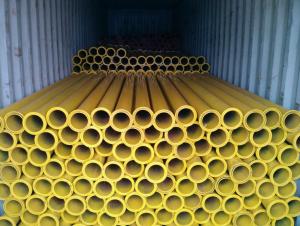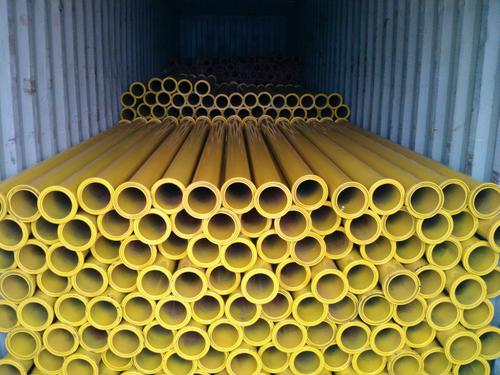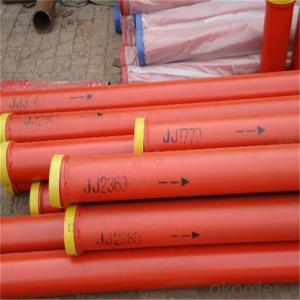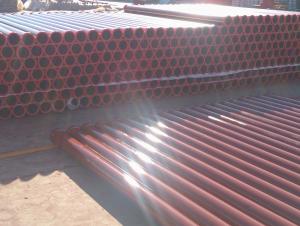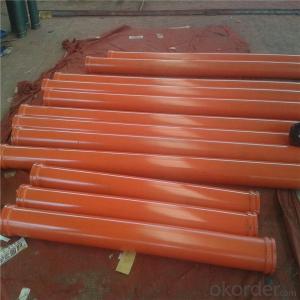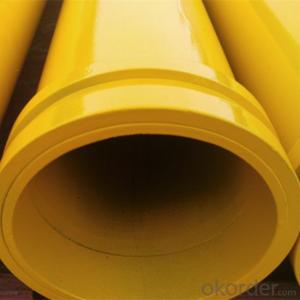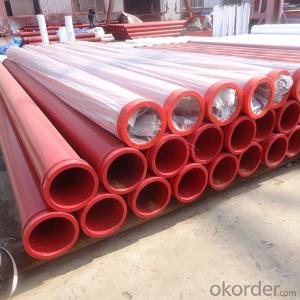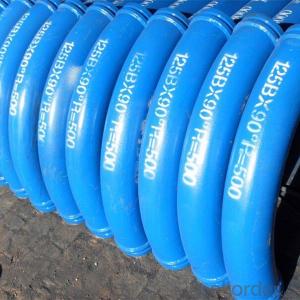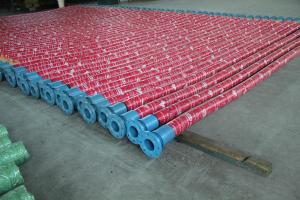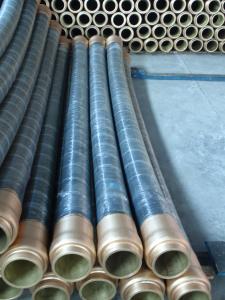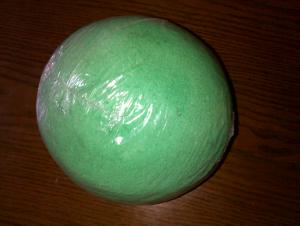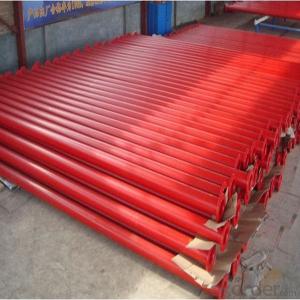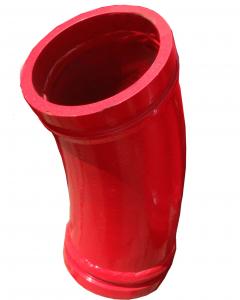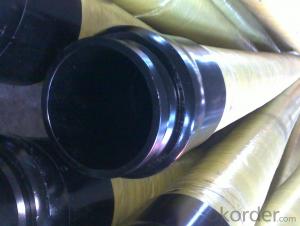Concrete Pump Delivery Pipe with SCHWING Flange
- Loading Port:
- Tianjin
- Payment Terms:
- TT or LC
- Min Order Qty:
- 5 pc
- Supply Capability:
- 10000 pc/month
OKorder Service Pledge
OKorder Financial Service
You Might Also Like
Product Description:
Production Name: Concrete Pump Delivery Pipe with SCHWING Flange
Materials: ST 52
Concrete Pumping Capacity: about20, 000M3
Inner Diameter: 125mm
Outer Diameter: 133mm
Thickness: 4.5mm
Length: 3000mm
Notes: total series of concrete delivery pipe for different brand concrete pump(PUTZMEISTER, SCHWING, CIFA, SANY, ZOOMLION, IHI, KYOKUTO Etc)available.
Scope of Application of the Equipment
Concrete Pump Delivery Pipe widely used on concrete pump truck, concrete placing boom, trailer concrete pump etc. Our concrete delivery pipes have been successfully exported to many countries from 1998, Our main markets as below: Middle East, Southeast Asia, America, Brazil, Italy, Russia, South Africa etc Aiming at the largest concrete pump parts manufacturer, and reliable, professional supplier in China, we can supply concrete pump elbows, delivery pipes, casting or forging couplings, end rubber hoses, rubber piston, tungsten wear plates, delivery cylinders, and other hydraulic parts, one stop service for your concrete pump parts and accessory business.
Product Advantages:
Concrete Pump Delivery Pipe are durable, strong, and resists corrosion.
Main Product Features:
· Premium quality
· Prompt delivery & seaworthy packing (10-20 days after receiving deposit)
Reliable performance
Easy and smooth operation
High safety.
· Professional Service
· Competitive pricing
Product Specifications:
Dimensions and masses of the complete pipe and its major components
FAQ:
Q1: Why buy Materials & Equipment from us?
A1: All products have their ISO certifications, and adheres to the highest standards and a commitment to supply chain safety and customer satisfaction.
Q2: How do we guarantee the quality of our products?
A2: We have established an advanced quality management system which conducts strict quality tests at every step, from raw materials to the final product. At the same time, we provide extensive follow-up service assurances as required.
Q3: How soon can we receive the product after purchase?
A3: Within three days of placing an order, we will begin production. The specific shipping date is dependent upon international and government factors, but is typically 10 to 30 workdays.
Q4: If we can produce some Concrete Pump Delivery Pipe according to customers request?
A4: Yes, we can produce Concrete Pump Delivery Pipe according to the difference country situations to make it suitable to the market and customers. We have very professional technical team to make the design.
Q5: How to make a quick resolution for after service?
A5:We have overseas branches all-around of world, IF needed, the seller shall dispatch 2 engineers to the buyer's site for supervision of training. The buyer shall make available of necessary facilities &skilled personnel at site for training.
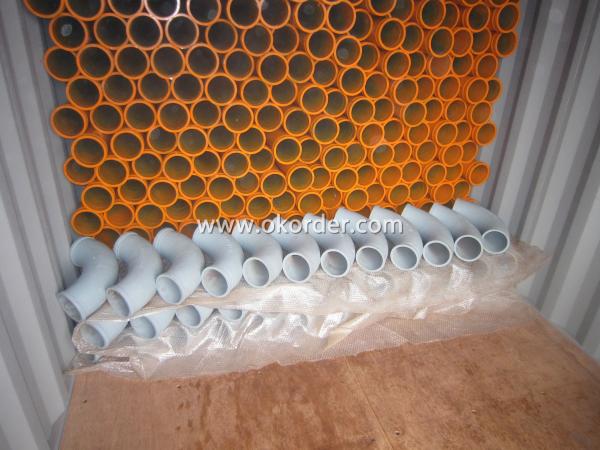
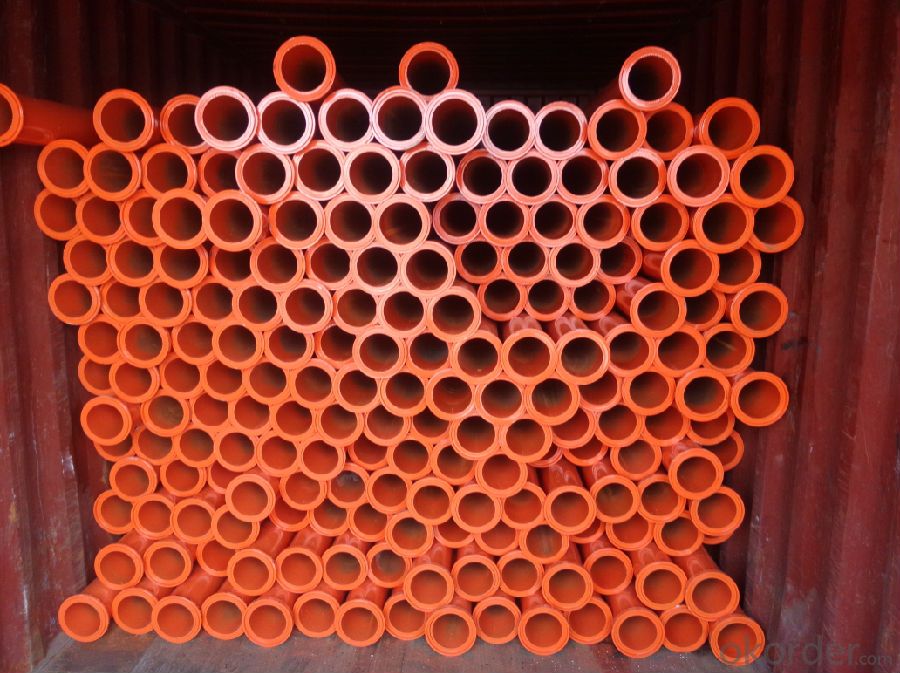
- Q: How can a faulty filter affect the pumping process?
- A faulty filter can impede the pumping process by allowing debris, contaminants, or particles to pass through and clog or damage the pump components. This can result in reduced efficiency, increased wear and tear, decreased flow rates, and potential pump failure.
- Q: Are there any specific guidelines for the installation of hopper components or agitators in concrete pump spare parts?
- Concrete pump spare parts have specific guidelines for the installation of hopper components and agitators. These guidelines aim to ensure the equipment's proper functioning and safety. Here are some key guidelines to consider: 1. Manufacturer's instructions: Carefully read and understand the manufacturer's instructions for installing hopper components and agitators. These instructions provide specific details and steps for installation. 2. Use the right tools: Utilize appropriate tools and equipment as recommended by the manufacturer. This includes employing the correct size wrenches, bolts, and other necessary tools for the installation process. 3. Clean and level surface: Prior to installation, ensure the surface is both clean and level. This promotes proper alignment and functioning of the parts. 4. Check for damages or defects: Conduct a thorough inspection of the hopper components and agitators for any damages or defects prior to installation. If any issues are found, address them before proceeding with the installation. 5. Align and position correctly: Adhere to the manufacturer's recommendations for aligning and positioning the hopper components and agitators. Improper alignment may result in malfunctioning or premature wear of the parts. 6. Secure all connections: Ensure that all connections, such as bolts, nuts, and clamps, are securely fastened according to the manufacturer's instructions. Loose connections can lead to accidents or damage to the equipment. 7. Test the equipment: After installation, it is crucial to test the equipment to ensure proper functioning. Follow the manufacturer's guidelines for testing and make any necessary adjustments if required. 8. Regular maintenance and inspection: Once the hopper components and agitators are installed, it is vital to regularly inspect and maintain them. This includes cleaning, lubricating, and replacing any worn-out parts as recommended by the manufacturer. By adhering to these guidelines, you can ensure the correct installation of hopper components and agitators in concrete pump spare parts, promoting efficient operation and prolonging the equipment's lifespan.
- Q: What is the role of a concrete pump hopper agitator blade?
- The role of a concrete pump hopper agitator blade is to ensure the consistency and flow of the concrete while it is being pumped. The agitator blade is designed to mix the concrete in the hopper, preventing it from settling or becoming too thick. By continuously stirring the concrete, the agitator blade helps to maintain its proper consistency, making it easier to pump and ensuring a more uniform distribution of the material. This is particularly important when working with large volumes of concrete or when pumping over long distances, as it helps to prevent blockages and maintain a smooth and efficient pumping process. Overall, the agitator blade plays a crucial role in the successful operation of a concrete pump, ensuring that the concrete remains in a workable state throughout the pumping process.
- Q: How often should hopper agitator shaft bearings be inspected or replaced in a concrete pump?
- The frequency at which hopper agitator shaft bearings in a concrete pump need to be inspected or replaced can vary depending on several factors. These factors include the recommendations from the manufacturer, the operating conditions, and the maintenance history of the pump. However, as a general rule, it is advisable to inspect these bearings at least once a year or every 500-1000 hours of operation, whichever comes first. During regular inspections, it is crucial to check for any indications of wear, damage, or excessive movement in the bearings. If any abnormalities are identified during the inspection, immediate action should be taken to address the problem. In some instances, lubrication or adjustment might be enough to rectify minor issues, whereas more significant damage or wear may necessitate replacing the bearings. It is essential to recognize the vital role that hopper agitator shaft bearings play in ensuring the smooth and efficient functioning of the concrete pump. Neglecting regular inspections or delaying necessary replacements can result in increased downtime, reduced productivity, and potential safety risks. Therefore, it is recommended to adhere to the manufacturer's guidelines and seek advice from experienced technicians or specialists for a more precise evaluation of the specific intervals for inspection and replacement in your concrete pump.
- Q: What are some common issues with concrete pump pipes and how can they be prevented?
- Some common issues with concrete pump pipes include blockages, leaks, and wear and tear. These issues can be prevented by following proper maintenance and operational practices. 1. Blockages: Blockages occur when concrete hardens inside the pipe, hindering the flow. To prevent blockages, it is important to regularly clean the pipes after each use. Flushing the pipes with water or using a high-pressure air hose can remove any residual material and prevent build-up. Additionally, using concrete mixtures with proper consistency and avoiding excessive use of additives can reduce the likelihood of blockages. 2. Leaks: Leaks can occur due to cracks or gaps in the pipe, causing concrete to seep out. Regular inspection of the pipes is crucial to identify any signs of damage or wear. Repairing or replacing damaged sections promptly can prevent leaks. It is also essential to use high-quality pipes that are resistant to abrasion and chemical corrosion, as they are less prone to developing leaks. 3. Wear and Tear: Concrete pump pipes are subjected to significant stress and abrasion during operation. Over time, this can lead to wear and tear, resulting in weakened pipes or even breakages. To prevent excessive wear, it is important to use pipes made from durable materials such as hardened steel or composite materials. Regularly inspecting the pipes for signs of wear, such as thinning or deformation, and replacing them as needed can help prevent sudden failures. 4. Pipe movement and alignment issues: Concrete pump pipes can shift or become misaligned during operation, leading to reduced efficiency and potential damage. To prevent this, ensure that the pipes are securely fastened to the pump and properly aligned. Using clamps and brackets or employing anti-vibration measures can help maintain the stability and alignment of the pipes during pumping operations. 5. Operator errors: Improper handling and operation can also contribute to issues with concrete pump pipes. Operators should be adequately trained in operating the pump and handling the pipes. Following recommended operating procedures, avoiding excessive pressure or flow rates, and being cautious while maneuvering the pipes can prevent unnecessary strain and damage to the pipes. Overall, proactive maintenance, proper handling, and selecting high-quality pipes can significantly reduce common issues with concrete pump pipes, ensuring smooth and efficient concrete pumping operations.
- Q: Can concrete pump spare parts be purchased online?
- Indeed, online purchases of concrete pump spare parts are possible. Numerous online platforms and websites cater specifically to the sale of construction equipment and spare parts, including those for concrete pumps. These digital stores present a comprehensive assortment of options and brands, enabling customers to peruse and choose the precise spare parts required for their concrete pump. Moreover, online buying grants the convenience of price comparison, perusal of customer reviews, and doorstep delivery of the spare parts. Nevertheless, it remains imperative to ascertain the authenticity and dependability of the online store prior to making a purchase, guaranteeing the acquisition of genuine and top-notch spare parts.
- Q: How is a concrete pump pipe different from a regular pipe?
- A concrete pump pipe is specifically designed to be used in concrete pumping applications, whereas a regular pipe is more commonly used for general plumbing purposes. Concrete pump pipes are typically made of high-quality and durable materials to withstand the high pressure and abrasive nature of pumped concrete. They also have specialized ends, such as flanges or couplings, to provide a secure connection between the pump and the delivery system. In contrast, regular pipes may come in various materials and sizes, depending on their intended use in plumbing systems.
- Q: What is the purpose of a concrete pump accumulator?
- The purpose of a concrete pump accumulator is to store energy and provide a steady and consistent flow of concrete during the pumping process. It acts as a buffer between the pump and the delivery line, ensuring that the concrete is delivered smoothly and without interruption. The accumulator works by compressing air or nitrogen, which is then used to push the concrete through the pipeline when the pump is not actively pumping. This helps to maintain pressure and prevent any blockages or irregularities in the concrete flow. Additionally, the accumulator can help to reduce wear and tear on the pump by absorbing pressure fluctuations and providing a more controlled and consistent flow of concrete. Overall, the purpose of a concrete pump accumulator is to enhance the efficiency, reliability, and performance of the pumping process.
- Q: If the concrete pump valve jam how to judge and deal with?
- The valve plug is formed gradually, the main reason is that after the completion of concrete pump, no time to use high-pressure water washing, resulting in concrete residue in the tube after a considerable period of time, gradually thickening, accumulation of consolidation, resulting in congestion.
- Q: Can concrete pump spare parts be customized according to specific requirements?
- Yes, concrete pump spare parts can be customized according to specific requirements. Many manufacturers offer customization options to meet the unique needs and preferences of their customers. This allows for the production of spare parts that are specifically designed to fit and function optimally with the particular concrete pump model or brand. Customization can include modifications in dimensions, materials, finishes, and other specifications to ensure compatibility and enhance performance. Furthermore, customization can also be done to meet specific environmental or project requirements, such as resistance to corrosion or extreme temperatures. Overall, the ability to customize concrete pump spare parts provides flexibility and ensures that the equipment operates efficiently and effectively in various construction projects.
Send your message to us
Concrete Pump Delivery Pipe with SCHWING Flange
- Loading Port:
- Tianjin
- Payment Terms:
- TT or LC
- Min Order Qty:
- 5 pc
- Supply Capability:
- 10000 pc/month
OKorder Service Pledge
OKorder Financial Service
Similar products
Hot products
Hot Searches
Related keywords
